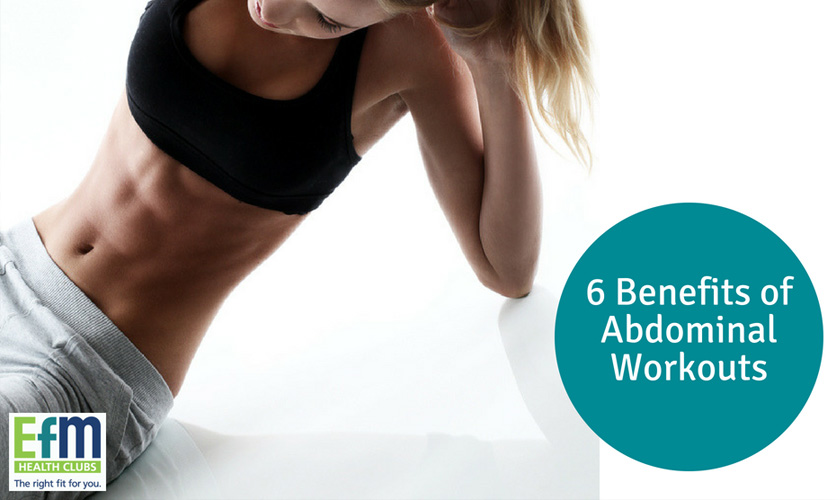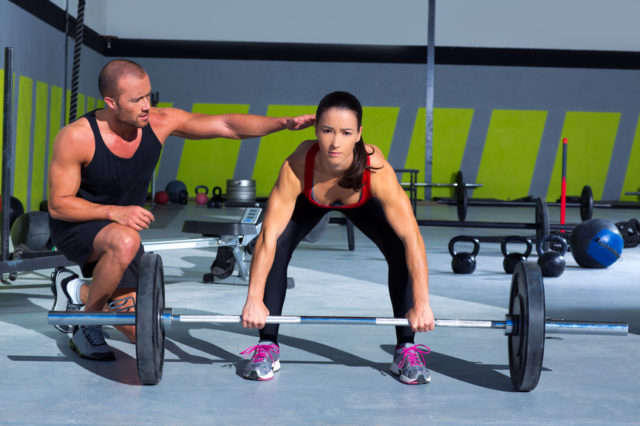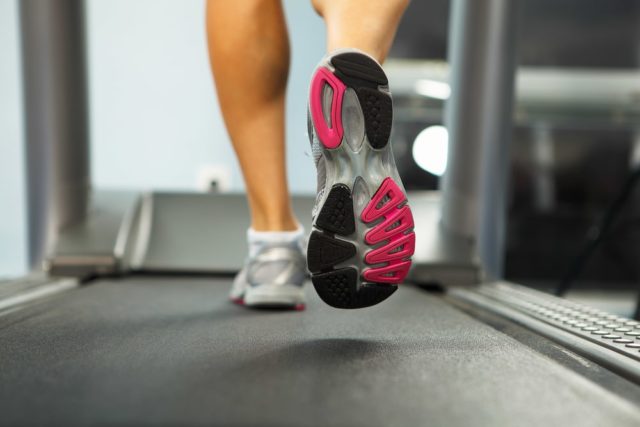
6 Benefits of Abdominal Workouts
Updated 9th May 2023
It’s surprising how many people miss the abdominal muscles when working out. In doing so, they miss out on the numerous benefits of abdominal workouts. If you’ve been skipping your ab session, let’s take a look at some of the key benefits of ab workouts…
Benefits Of Ab Workouts
They’re not just there for the 6 pack look!
Abdominal muscles play a crucial role in posture, support of the spine, balance, stability, and respiratory functions such as breathing.

Building strength and endurance in these muscles is essential as it creates benefits such as improved posture, reduced back pain, improved balance and stability and potentially assistance with breathing.
Improved performance in sports
Many sports or strenuous activities require balance, stability and core strength. Abdominal workouts target these muscles and thus provide you with core strength whilst performing the activity.

These workouts enable players to transfer more energy from their core to their limbs, thus, increasing their performance and scores, as opposed to players who have weaker abdominal muscles.
Reduced lower back pain
Lower back pain is a problem affecting many people from all backgrounds. Weak abdominal muscles contribute to increased lower back pain. Lower back muscles that are not exercised become rigid in the joint areas and may lead to chronic lower back pain.

Abdominal exercises target these back muscles and the spine, making them more flexible and less rigid, thus reducing lower back pain.
These workouts also improve body posture when walking, standing or sitting, thus reducing the occurrence of back pain associated with poor posture.
Improved posture and stability
As we’ve referenced, abdominal workouts target the abdominal muscles which are important for posture and balance. Stability is especially vital for people in sports, and the elderly who are at a risk of constant tumbles and slips.

Abs workouts strengthen the muscles around the spine and improve posture as the body’s weight is correctly distributed. Having a good posture is key in increased confidence and good health for the spine.
Abdominal workouts also improve harmony between muscles in the body which plays a major role in balance, posture, and stability.
Improved ability to bear weight

Abdominal exercises provide strength to bear weight. An individual who engages in abdominal workouts is better placed to lift heavier weights without causing damage to the spine. This is because abs workouts strengthen the torso and help to provide a stable base for lifting.
Firmer waistline

Abdominal workouts help in reducing body fat, a problem associated with many lifestyle diseases such as diabetes and obesity. By increasing muscle mass in the abdominal region, the body metabolism increases and more fats are burned. This leads to a trimmer, leaner body.
Abdominal muscles require strengthening just like other muscles of the body. While these workouts contribute to a good looking and trim body, having the inner muscular strength is a major goal to aim at when doing abdominal workouts.
Variety Is Key

Abdominal workouts, however, do not eliminate body fat on their own. If you are looking to actually lose weight, then variety is key. Try a nice balanced workout that includes plenty of cardiovascular exercise, some resistance training for overall strength and of course, remember to work those abs!
Frequently Asked Questions
What are the benefits of doing abs every day?
While doing abs exercises every day might seem like a great way to achieve a toned midsection, it may not be the most effective approach. Your abdominal muscles, like other muscles, need time to recover between workouts. However, there are some potential benefits of consistently training your abs, which include:
Improved Core Stability: Strong abdominal muscles contribute to better core stability, which can enhance overall physical performance and help maintain proper posture.
Reduced Risk of Lower Back Pain: Developing strong abs can help to alleviate the strain on your lower back muscles, potentially reducing the risk of lower back pain.
Enhanced Balance and Coordination: A strong core can improve your balance and coordination, making it easier to perform various physical activities and reducing the risk of falls or injuries.
Better Functional Fitness: Incorporating ab exercises into your regular workout routine can help improve your functional fitness, making it easier to perform everyday tasks and movements.
Aesthetic Appeal: Consistently working on your abs can lead to a more toned and defined midsection, which many people find aesthetically appealing.
However, it’s essential to strike a balance and allow your muscles time to recover. Instead of doing intense abs exercises every day, consider training your abs 2-3 times per week, allowing at least 48 hours between workouts for recovery. This approach will enable you to reap the benefits of strong abdominal muscles while avoiding overtraining and potential injury.
What are the best lower ab exercises to do from home?
The following lower ab exercises can be performed at home without any special equipment, making them an ideal addition to your workout routine:
Reverse Crunches:
Lay flat on your back with your arms at your sides. Lift your legs, bending your knees at a 90-degree angle. Contract your lower abs to lift your hips off the ground, bringing your knees towards your chest. Lower your hips back down slowly and repeat.
Leg Raises:
Lie on your back with your legs straight and hands placed under your glutes. Keeping your legs straight, lift them towards the ceiling until they form a 90-degree angle with your torso. Slowly lower your legs back down without touching the ground and repeat.
Scissor Kicks:
Lie on your back with your legs straight and hands under your glutes. Lift your legs a few inches off the ground. Alternating legs, lift one leg higher while keeping the other leg slightly above the ground. Continue alternating in a scissor-like motion.
Flutter Kicks: Lay on your back with your legs straight and hands under your glutes. Lift your legs a few inches off the ground. Rapidly and alternately raise and lower each leg, creating a fluttering motion while keeping your lower back pressed to the floor.
Bicycle Crunches:

Lay on your back with your hands behind your head and knees bent. Bring your right elbow towards your left knee while straightening your right leg. Switch sides, bringing your left elbow towards your right knee and straightening your left leg. Continue alternating sides in a cycling motion.
Mountain Climbers: Begin in a plank position with your hands shoulder-width apart. Bring your right knee towards your chest, then return to the starting position. Repeat with your left knee and continue alternating legs at a quick pace.
Remember to maintain proper form and engage your core throughout each exercise. Start with a moderate number of repetitions and gradually increase the intensity as you become stronger. Incorporate these exercises into your overall workout routine 2-3 times per week for optimal results.
What is stomach pain after working out abs?
Stomach pain after working out your abs could be due to muscle soreness, cramps, or strain caused by intense or unfamiliar exercises.
This discomfort, known as Delayed Onset Muscle Soreness (DOMS), typically occurs 24-72 hours after a workout and is a common result of muscle fatigue and microscopic tears in muscle fibres. Proper warm-up, cool-down, and stretching can help prevent or minimize DOMS.
However, if the pain is severe, persistent, or accompanied by other symptoms, such as nausea or sharp pain, it might indicate an injury or an underlying condition, in which case consulting a healthcare professional is recommended.
When starting any new diet or nutritional program, we recommend that you seek the advice and support of a qualified professional to ensure that it is suitable for you and your individual circumstances.




